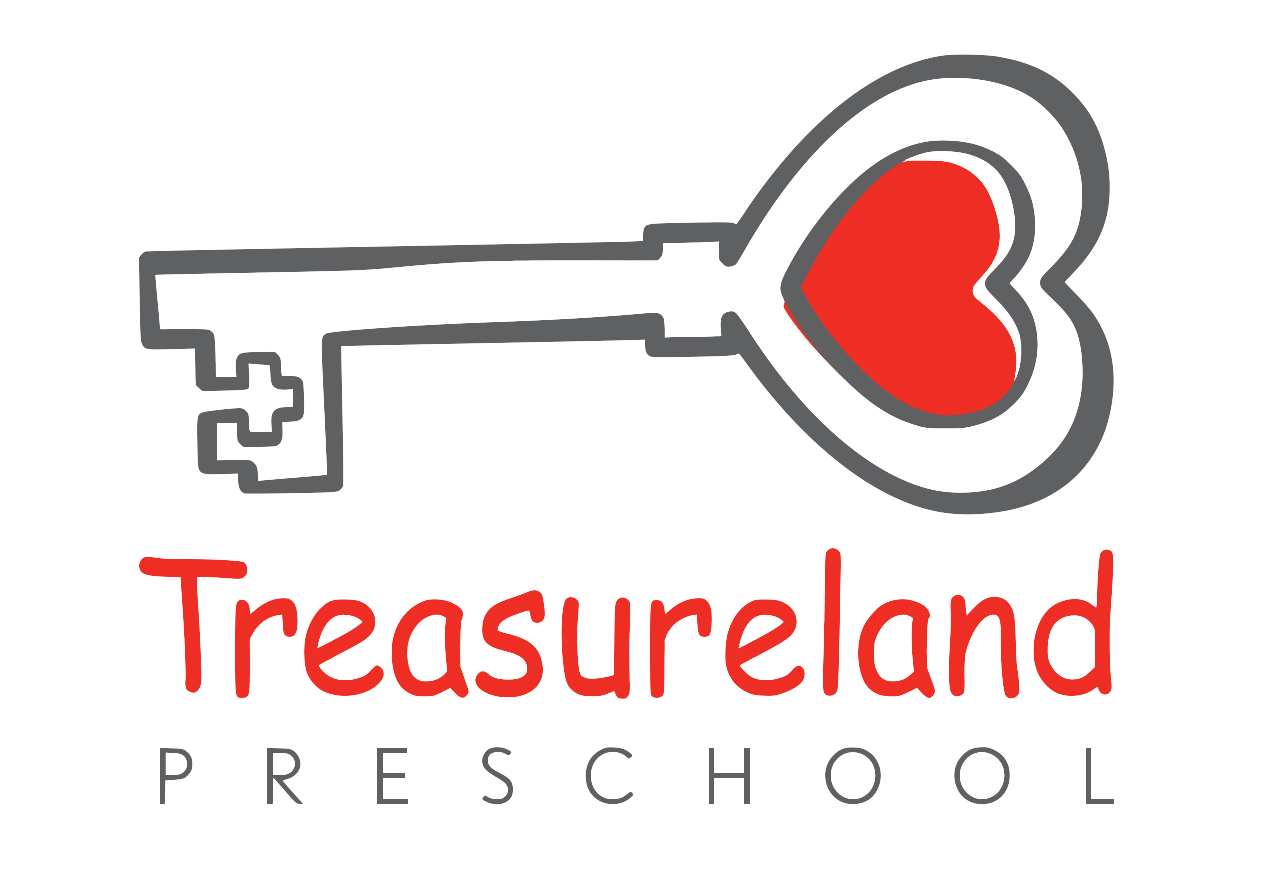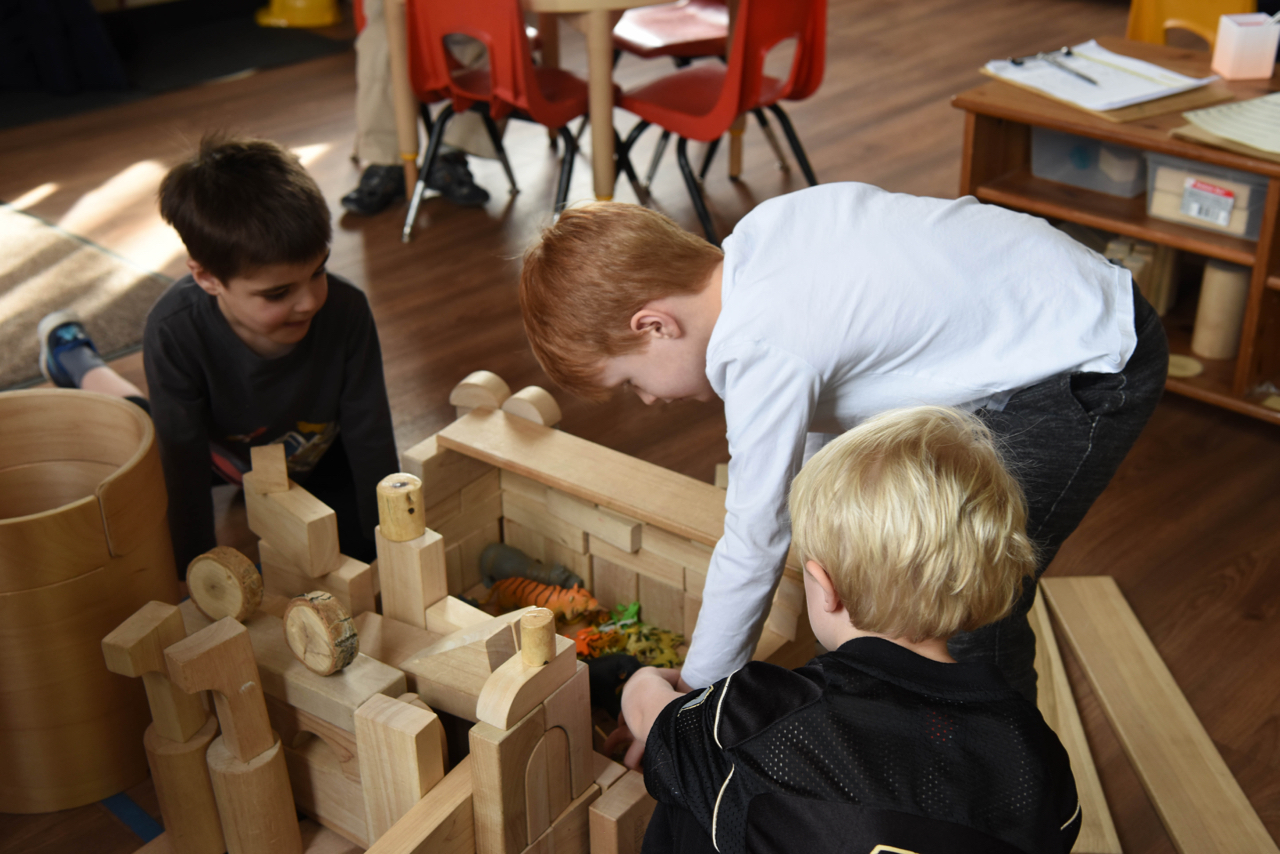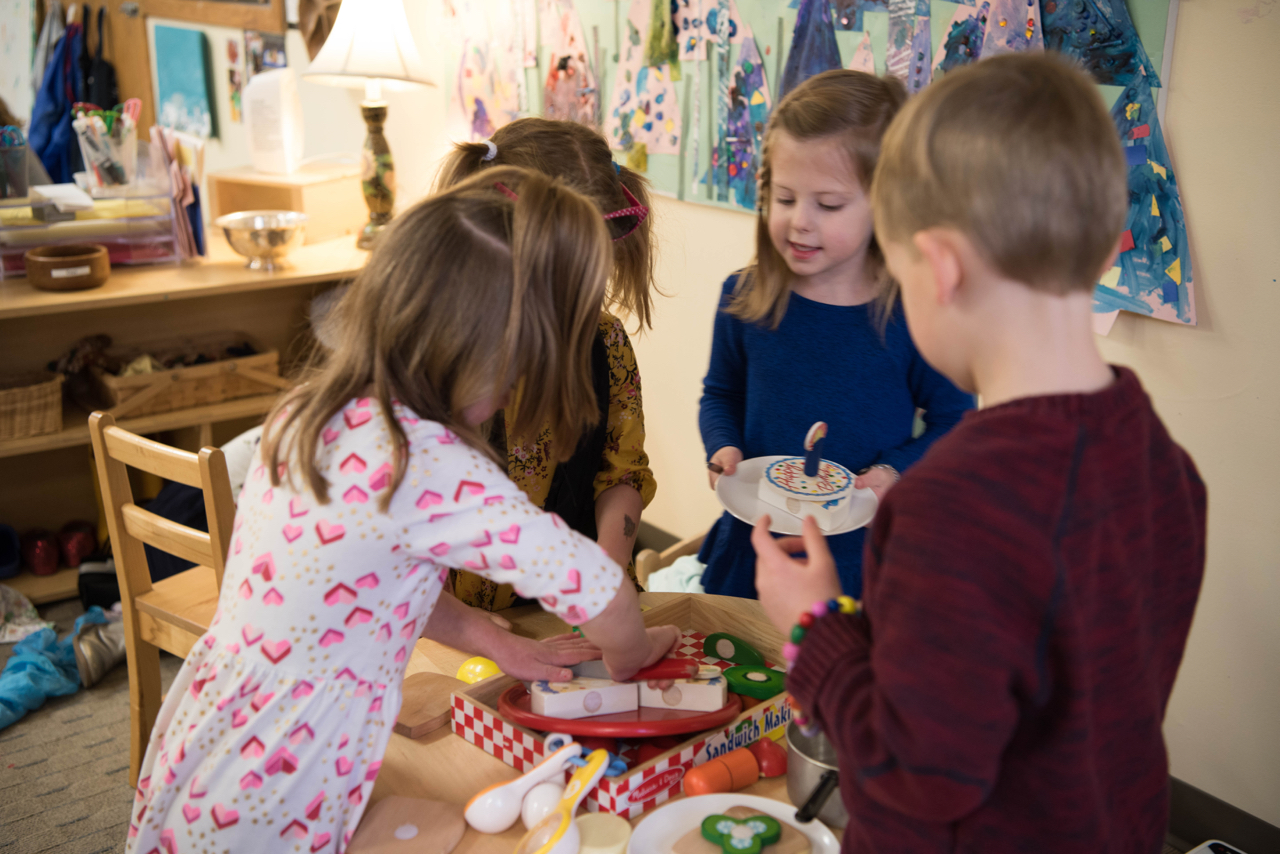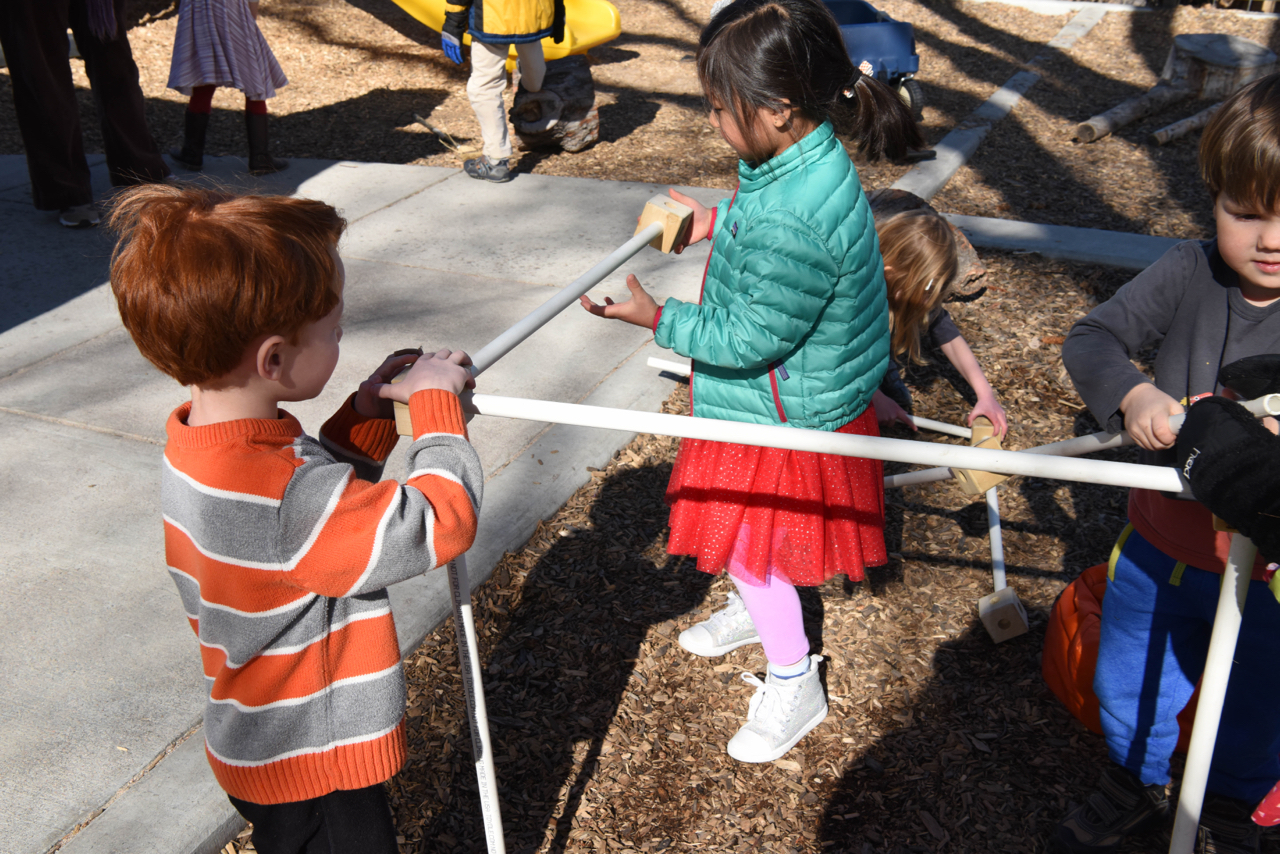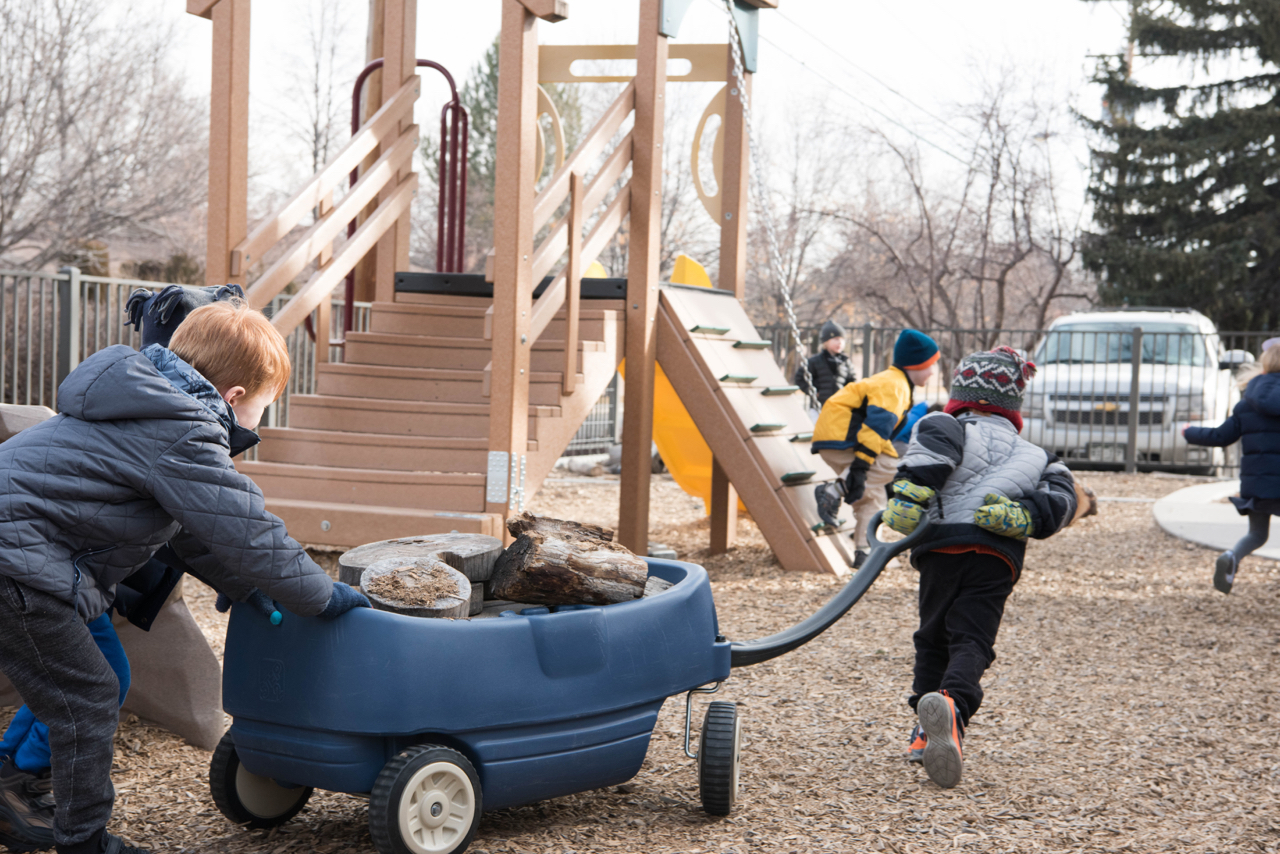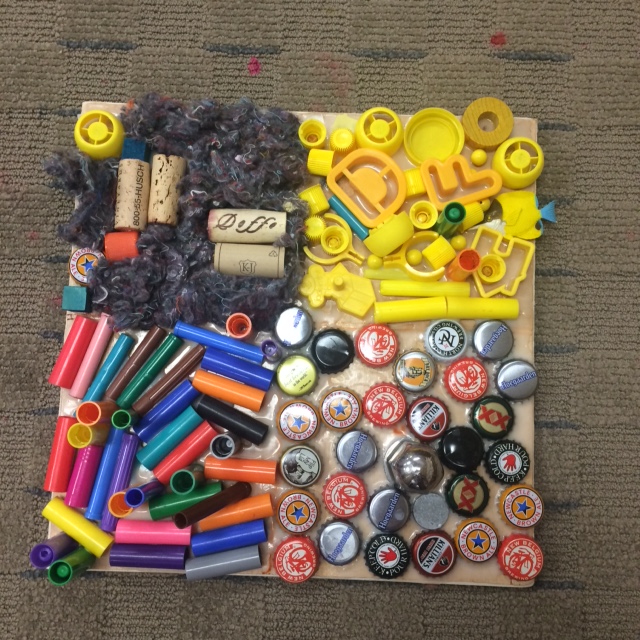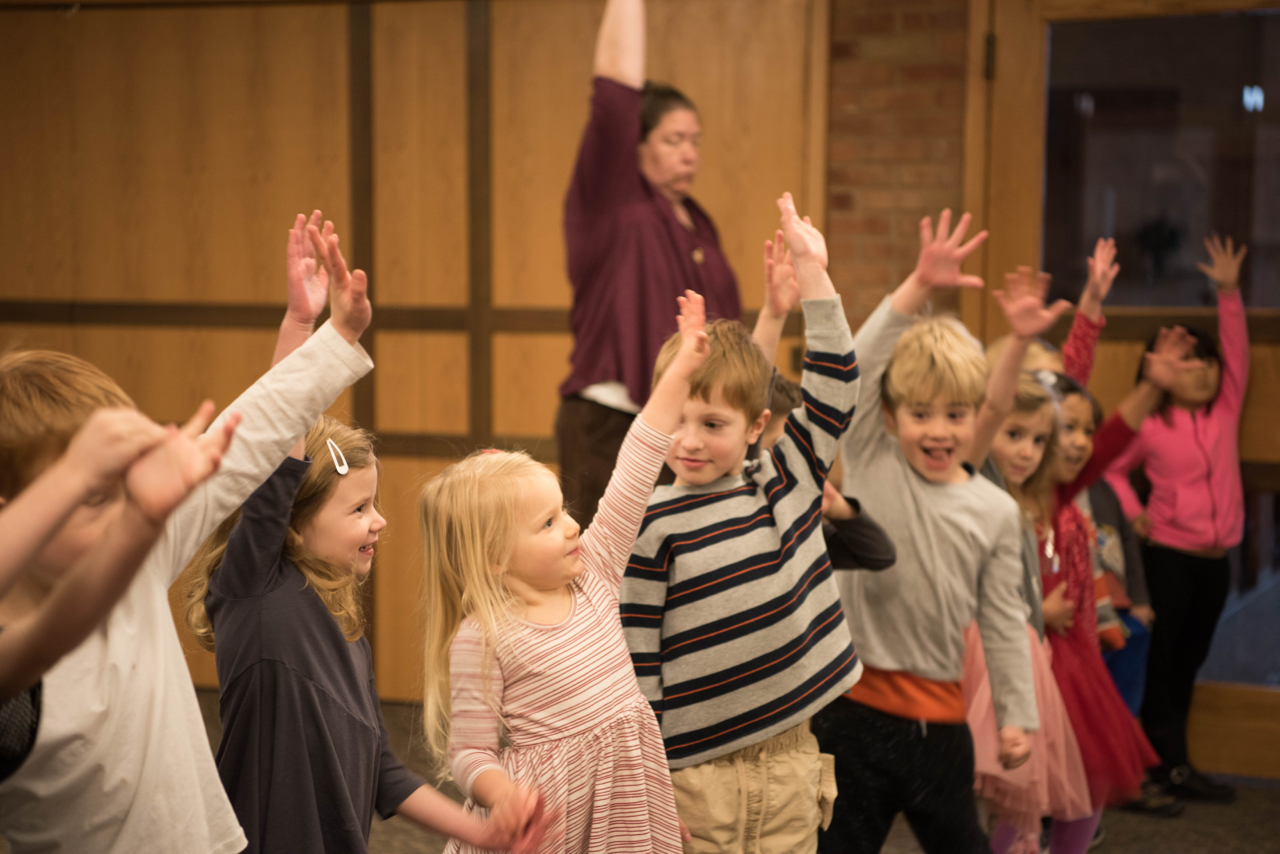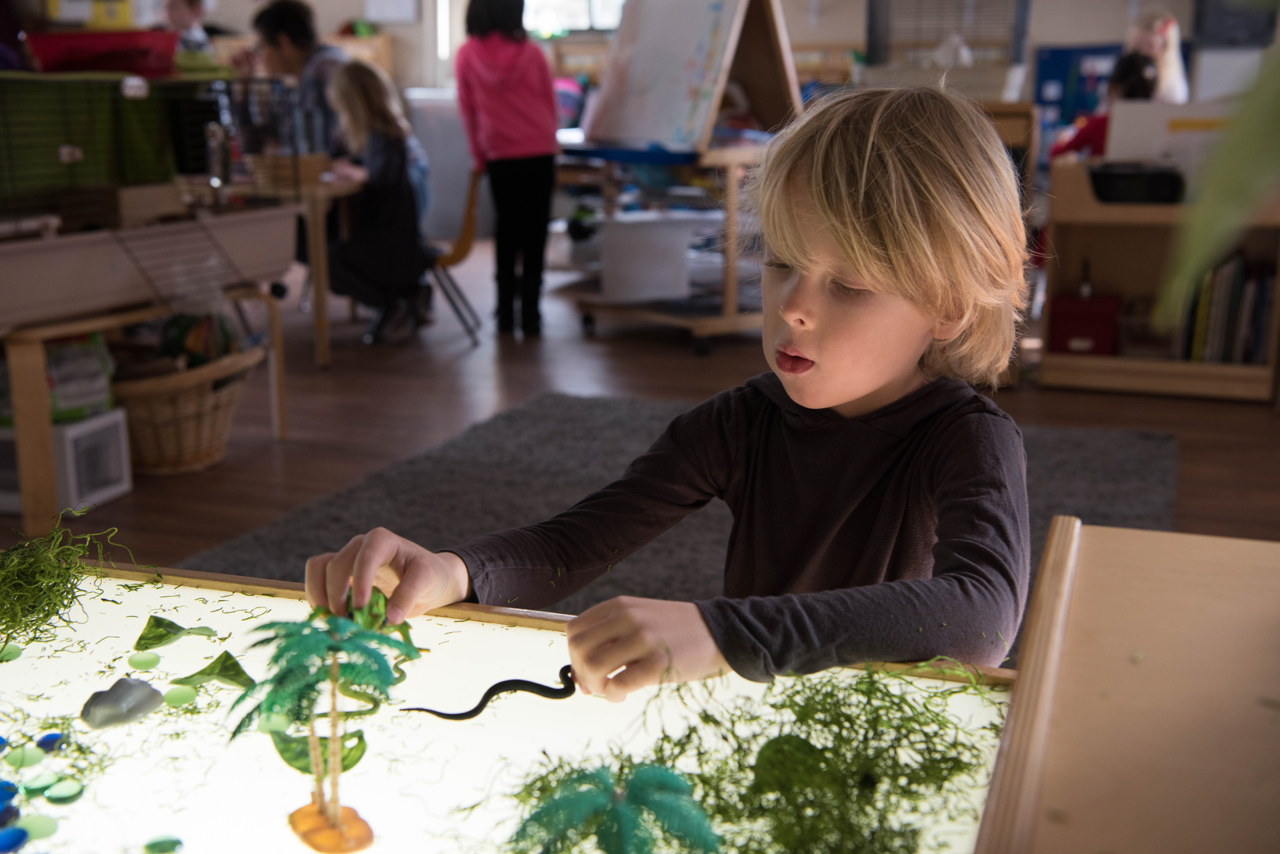Pre-Kindergarten
Building Self-Confidence, Solidifying Peer Relationships, Mastering Social Emotional Skills and Building for the Future
PRE-K: 4 years old by October 1
Opportunities for imaginative and constructive play ideas are created, and an open forum for the expression of ideas is created. Cooperative and collaborative interactions with more sophisticated language and role playing are encouraged. A supportive and emotionally safe environment allows for mistakes and social missteps as children navigate their social world resolving conflicts while experiencing negotiation and compromise, and receiving coaching as needed. Provocation for investigation, creative and critical thinking is consistently introduced to encourage prediction, thinking through problems and applying strategies for solving them. Kindergarten readiness skills are embedded in all activities as interest in literacy, math and science evolve, and social/emotional maturity occurs. Learning activities support stretched attention spans. Planning, creating, revision and review become a part of everyday work, while complex structures, innovative creations and in depth play scenarios are exhibited. Imagination and creative expression are invited and nourished by the variety of materials and media available.
Class is held from 9 AM - 1 PM. For class offerings and tuition please click here.
About Pre-K Children
Children who are four and five begin to choose their own friends and may have a best friend. They are usually easily understood and have a large vocabulary. Independence is exerted more often in choices of clothing, food and activities in which they want to participate. Independence in self-help skills is expected. These children may exhibit some frustration when dealing with the discrepancy between perceived skill mastery and desire to accomplish tasks independently. They handle simple chores like feeding pets, sorting and folding laundry, picking up toys, helping with table setting and meal preparation, all of which instill confidence and responsibility and a sense of purpose. Four and five year-olds move and are active and agile. They are more aware of their feelings and self-regulation is more predictable. Children this age are building skills needed in elementary school. The curriculum for these children is based on our knowledge of their developmental growth in the following areas:
SOCIAL EMOTIONAL: Four and five year-olds are beginning to develop better interpersonal skills and are more successful at interacting with others in different settings and circumstances. They take turns and share more consistently, though they may not want to. Generally, they are more sensitive to others’ feelings. Improved emotional control and self-regulation are more consistent and predictable, though children this age do experience emotional extremes and contradictions. They engage peers in conversation; they are increasingly curious, appropriately ask for help, and recognize their feelings and respond more appropriately. They are developing more positive problem solving strategies and exhibit more focus and attention to tasks. Children this age begin to understand the difference between right and wrong, though they may not always do the right thing.
PLAY: Four and five-year-olds play more cooperatively, with sharing either emergent or evident. They often have favorite games and enjoy competing at simple games, though losing may cause upset. Play is imaginative, inventive and cooperative in nature, and children often build on the play from the day or week before, extending the rules and ideas. Building structures are more intentional, complex and detailed; creative and innovative play is connected to the structures as well.
MOTOR: Children this age are more adventurous and climb, run, skip and jump with greater ease, navigating different surfaces more adeptly. Scooters, bikes and play equipment are used with greater skill, increased coordination, ease of movement, and more precision. Fine motor skills are more refined. Eye-hand coordination is improving; scissor skills are better developed. The more conventional three-point grip leads to frequent controlled drawing and writing.
LANGUAGE AND LITERACY: There is rapid growth and expansion of comprehension, interest in language and expressive language in four and five year-olds. Dramatic gains in comprehension and the ability to effectively use oral language to communicate ideas and experiences surface. Detailed stories have a beginning, middle and end and are shared. Conversation with articulation clarity is lengthier, including more complex vocabulary and sentence structure, while incorporating rules of grammar. Children this age exhibit increased motivation for reading, basic phonological awareness and an understanding of text read aloud. Letter and sound recognition is more emergent. They are motivated to express themselves using writing, and understand that print conveys meaning. They love rhyming, and demonstrate a growing mastery of language structure and a more sophisticated understanding of conversation.
COGNITIVE: Children this age reflect and approach learning with curiosity and interest, focus and increased attention span. They problem solve with increasing competence. Four and five year-olds integrate existing knowledge with new experiences and make solid connections. They are creative in their thinking and manipulate materials using invention, individuality and complexity. An understanding of math concepts and operational thinking is evident in children; they compare, contrast, measure and sort based on different properties and characteristics. They practice forecasting, and making predictions. Representational drawings that are recognizable emerge. Four and five year-olds become more cognizant of individual and well as cultural differences.
